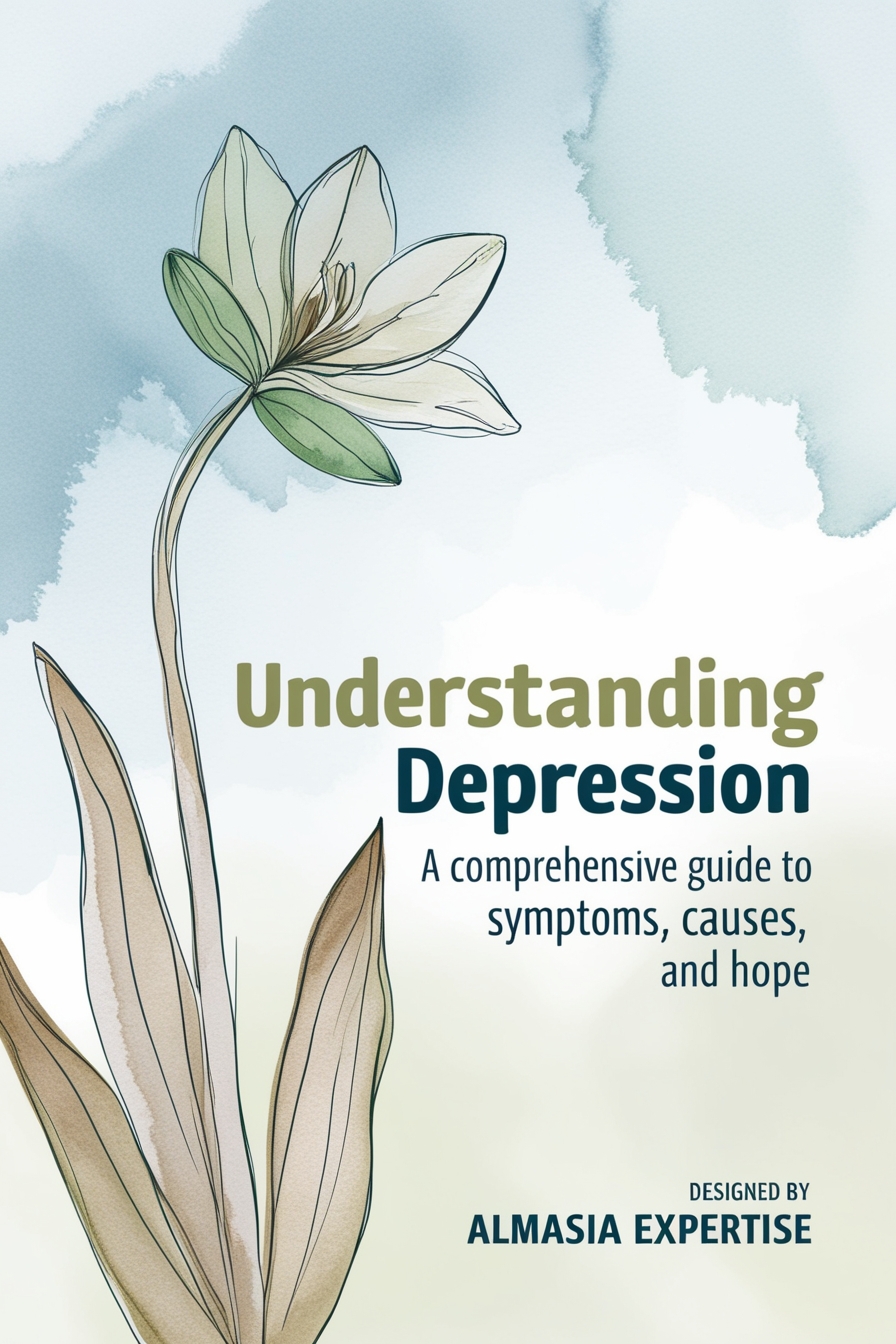
What are the symptoms of depression? Complete 65 PDF Guide
What are the symptoms of depression? Complete 65 PDF Guide
Understanding Depression: A Comprehensive Guide to Symptoms, Causes, and Hope
Depression is more than just feeling sad—it’s a complex mental health condition that affects millions of people worldwide. Despite its prevalence, many individuals struggle to recognize its symptoms or seek help due to stigma, lack of awareness, or misunderstanding. This guide is designed to bridge that gap. Whether you’re experiencing depression yourself, supporting a loved one, or simply seeking to educate yourself, this 66-page guide provides a thorough, compassionate, and actionable resource to help you navigate this challenging condition.
What This Guide Will Provide
- In-Depth Knowledge: A detailed exploration of the symptoms, causes, and types of depression.
- Practical Tools: Tips, tricks, and coping strategies to manage symptoms and improve mental well-being.
- Professional Insights: Evidence-based information from reputable sources like the WHO, NIMH, and Mayo Clinic.
- Visual Aids: Graphs, tables, and infographics to make complex information easy to understand.
- Actionable Steps: Guidance on seeking help, treatment options, and building a support system.
Table of contents
1. Introduction to Depression
o Definition of depression
o Overview of depression as a mental health condition
o Importance of recognizing symptoms early
o Visual: Graph showing global prevalence of depression (WHO data)
2. Types of Depression
o Major Depressive Disorder (MDD)
o Persistent Depressive Disorder (PDD)
o Bipolar Disorder
o Seasonal Affective Disorder (SAD)
o Postpartum Depression
o Visual: Table comparing types of depression, symptoms, and duration
3. Common Symptoms of Depression
o Emotional symptoms (e.g., sadness, hopelessness)
o Physical symptoms (e.g., fatigue, changes in appetite)
o Cognitive symptoms (e.g., difficulty concentrating)
o Behavioral symptoms (e.g., social withdrawal)
o Visual: Infographic summarizing symptoms
4. Lesser-Known Symptoms of Depression
o Irritability and anger
o Physical pain (e.g., headaches, stomachaches)
o Sleep disturbances (insomnia or hypersomnia)
o Visual: Chart showing the frequency of lesser-known symptoms
5. Depression in Different Demographics
o Depression in men vs. women
o Depression in children and teens
o Depression in older adults
o Visual: Bar graph comparing depression rates by age and gender
6. Causes and Risk Factors of Depression
o Biological factors (genetics, brain chemistry)
o Environmental factors (trauma, stress)
o Psychological factors (personality, coping mechanisms)
o Visual: Diagram showing the interplay of risk factors
7. How Depression Affects Daily Life
o Impact on work and productivity
o Impact on relationships
o Impact on physical health
o Visual: Case studies or testimonials (with permission)
8. Diagnosing Depression
o How professionals diagnose depression
o Common screening tools (e.g., PHQ-9)
o The importance of seeking help
o Visual: Flowchart of the diagnostic process
9. Treatment Options for Depression
o Therapy (CBT, psychotherapy)
o Medication (SSRIs, SNRIs)
o Lifestyle changes (exercise, diet, sleep)
o Alternative treatments (mindfulness, acupuncture)
o Visual: Table comparing treatment options and effectiveness
10.Coping Strategies and Prevention
o Self-care tips for managing symptoms
o Building a support system
o Preventing relapse
o Visual: Checklist for daily coping strategies
11.Common questions about depression
To Whom This Guide Is For
- Individuals Experiencing Depression: If you’re struggling with depression, this guide will help you understand your symptoms and take the first steps toward healing.
- Loved Ones and Caregivers: If someone you care about is dealing with depression, this guide will equip you with the knowledge to support them effectively.
- Mental Health Advocates: For those passionate about mental health, this guide serves as a valuable resource to educate others and reduce stigma.
- Professionals and Educators: Therapists, counselors, and teachers can use this guide as a reference tool to better understand and address depression.
Benefits of This Guide
1. Empowerment: Gain a deeper understanding of depression and take control of your mental health journey.
2. Clarity: Break through the confusion and misinformation surrounding depression with clear, evidence-based information.
3. Practicality: Access actionable tips and strategies to manage symptoms and improve quality of life.
4. Compassion: Learn how to support yourself or others with empathy and understanding.
5. Hope: Discover that depression is treatable and that recovery is possible.
Why You Should Recommend This Guide
This guide stands out because it’s:
- Comprehensive: It covers everything from symptoms and causes to treatment and coping strategies.
- Accessible: Written in clear, easy-to-understand language with visual aids to enhance comprehension.
- Credible: All information is backed by reputable sources like the WHO, NIMH, and Mayo Clinic.
- Actionable: It provides practical steps and tools that readers can immediately apply to their lives.
- Inclusive: It addresses depression across different demographics, ensuring everyone feels seen and understood.
Advice on How to Use This Guide
1. Read It Thoroughly: Start from the beginning to build a solid foundation of knowledge about depression.
2. Take Notes: Jot down key points, symptoms, or strategies that resonate with you.
3. Apply the Tips: Implement the coping strategies and self-care tips into your daily routine.
4. Share It: If you know someone who might benefit, share this guide with them.
5. Revisit It: Use this guide as a reference whenever you need a reminder of the tools and information it provides.
